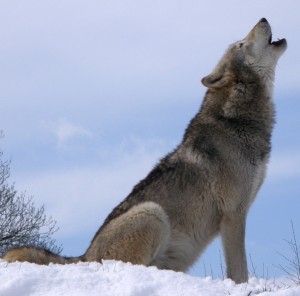 Recent research has suggested the stomach may also have been the pathway that led to man and dog becoming best friends.
Recent research has suggested the stomach may also have been the pathway that led to man and dog becoming best friends.
A study led by evolutionary geneticist Erik Axelsson from the Department of Medical Biochemistry and Microbiology at Sweden’s Uppsala University, has found evidence of genetic differences between domestic dogs and wolves that could explain why dogs evolved to eat a more varied diet than their wolf ancestors.
Axelsson and a team that included researchers from Sweden, Norway and the US, sequenced genetic codes of 12 wolves from around the world, and of 60 domestic dogs from 14 different breeds. The dogs’ results were merged to eliminate individual breed traits before they were compared with those of wolves.
Their analysis led the scientists to focus on 36 different regions, and 122 genes likely to have contributed to canine evolution. Genes crucial for brain function were found in 19 regions, including eight important for the development of the nervous system, while 10 regions were found to hold genes specifically related to the breakdown of starches in diet.
“Our findings show that the digestive system of dogs has adapted to be able to live on a diet similar to ours. It’s cool that we’ve shared an environment for such a long time and we’ve eaten the same kind of food for such a long time that we’ve started to become more similar in that way,” Axelsson said.
The study also found that dogs have four to 30 copies of AMY2B, the gene crucial for amylase production, compared to the two copies found in wolves – one on each chromosome. This gene is 28 times more active in the dog pancreas than it in wolves, and results in more protein. Comparative variations are also found in human societies where either high or low carbohydrate diets have traditionally been eaten.
Although dogs and wolves have the same number of copies of the enzyme maltase, also important for digesting starch, dogs were found to produce longer versions, a characteristic also found in herbivores and omnivores, enabling more efficient digestion for dogs.
The results support the theory that wolves began to associate with early farmers as settlements were established, and the creation of waste dumps became a food source to scavenge.
“Our results regarding starch digestion fit really neatly with that idea. Being an efficient scavenger didn’t only take a special type of behaviour, but also a digestive system that could cope with the food that was present, so dogs that evolved more efficient starch digestion had an advantage,” Axelsson said.
The next step is to discover when starch gene changes began, and to ascertain differences in behavioural genes between wolves and dogs. Comparisons in gene functions between wild and domesticated animals can have implications for human health research, and Axelsson said studying dog diets may have benefits for human diabetes treatments.
Anne Layton-Bennett


One Reply to “Did domestication start with the stomach?”